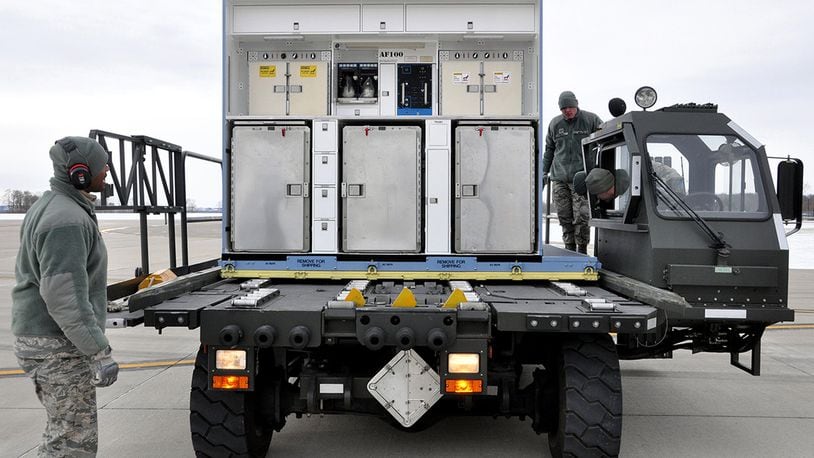“Our focus is training our Airmen, so we use the big-scale Air Force missions as an opportunity to do just that,” said Chief Master Sgt. Sean Storms, aerial port manager. “We’re also responsible for some missions that come in during the week, and we have a dedicated team of folks here every Tuesday for combat operations support.”
On an average UTA weekend, the squadron supports three to four real-world missions, in addition to participating in training exercises and completing other duties.
During last month’s UTA, a team of exclusively junior enlisted Airmen braved below-freezing temperatures to load a C-17 Globemaster III in direct support of fighter exercise, Sentry Aloha.
“This career field requires expertise in a number of areas,” said Senior Airman Dakota Coniglio, team chief for the Sentry Aloha upload. “Some days, you’re working closely with the flight crew to ensure proper documentation, and other days, you’re behind the wheel of a vehicle carrying thousands of pounds of expensive equipment. We have to be flexible and ready.”
Individuals in the air transportation career field are eligible for a number of special certifications, like hazmat inspector and joint inspector.
“The special handling section of an aerial port squadron clears and certifies hazardous material for military airlift,” said Staff Sgt. Benjamin Potter, special handling journeyman and newcomer to the 445th Airlift Wing.
As an active-duty Port Dawg in late 2016, Potter deployed to Iraq.
“I was one of only two certified joint inspectors on day shift,” Potter said. “I worked 12-hour shifts, seven days a week, for the duration of the six-month deployment.”
At times, the two-person team inspected more than a dozen vehicles in one day, he said, and the temperatures soared to 120 degrees.
“Anything that was going to be put on a military plane had to go through us first, regardless of the destination,” Potter said. “One day, I inspected the ammunition, baggage and gear for the Navy SEAL team that ended up infiltrating Mosul once we cleared them for departure.”
In preparation for the intense demands of deployment tempo, the 87th APS trains in a variety of locations across the globe each year.
About the Author
